#Future Trends in VR and AR Technology
Text

The Future of Virtual and Augmented Reality (VR/AR), powered by advancements like Dev Technosys, promises immersive experiences across industries. Anticipated trends include enhanced realism through AI, widespread adoption in healthcare for training and therapy, integration into education for interactive learning, and expanded applications in remote work and collaboration. As technology evolves, VR/AR will revolutionize how we perceive and interact with digital content, shaping the future of human-computer interaction.
#AI Impact on Augmented Reality#AI Impact on Virtual Reality#Future Trends in VR and AR Technology#Impact of Using Artificial Intelligence in VR and AR
0 notes
Text
#augmented reality#virtual reality#ar and vr#future of crm#crm technology#customer experience#digital transformation#tech innovation#crm trends#business growth
0 notes
Text
Exploring the Latest Trends in Software Development
Introduction
The software is something like an industry whose development is ever-evolving with new technologies and changing market needs as the drivers. To this end, developers must keep abreast with current trends in their fields of operation to remain competitive and relevant. Read to continue .....
#analysis#science updates#tech news#technology#trends#adobe cloud#business tech#nvidia drive#science#tech trends#Software Solutions#Tags5G technology impact on software#Agile methodologies in software#AI in software development#AR and VR in development#blockchain technology in software#cloud-native development benefits#cybersecurity trends 2024#DevOps and CI/CD tools#emerging technologies in software development#future of software development#IoT and edge computing applications#latest software development trends#low-code development platforms#machine learning for developers#no-code development tools#popular programming languages#quantum computing in software#software development best practices#software development tools
0 notes
Text
Tech Odyssey 2023: Navigating the Seas of Innovation
Charting a Course Through the Technological Frontier:
Provide an engaging introduction that highlights the rapid pace of technological advancements.
Mention the importance of staying updated with emerging technologies in today’s world.
Section 1: AI and Machine Learning Revolution:
Discuss recent developments in artificial intelligence and machine learning.
Highlight real-world…

View On WordPress
#AI and Machine Learning5G#AR and VR#Big Data Analytics#Biotechnology#Consumer Electronics#Cybersecurity#Digital Transformation#Emerging Technologies#Future of Work#Gadgets#Health Tech#Innovation 2023#Remote Work#Sustainable Tech#Tech Blog#Tech Education#Tech Investments#Technology Trends#TechnologyQuantum Computing
1 note
·
View note
Text
The Future of Market Research: Unveiling the Top 10 Emerging Trends
The landscape of market research is undergoing a transformative shift, driven by the convergence of technology, consumer behavior, and data-driven insights. Embracing these six emerging trends empowers businesses to connect with their target audiences on a deeper level, adapt to changing market dynamics, and make informed decisions that drive success
#Artificial intelligence (AI)#Augmented reality (AR) and virtual reality (VR)#Automation#Big data#Blockchain technology#Consumer behavior#Customer experience (CX)#Data analytics#Digital transformation#Emerging trends#Ethnographic research#Future of market research#Internet of Things (IoT)#Machine learning#market research#market xcel#Mobile market research#Personalization#Predictive analytics#Social media analytics#Voice of the customer (VoC)
0 notes
Text
The Future of E-commerce: What You Need to Know About the Latest Trends and Technologies
Greetings, fellow shoppers! As the world becomes increasingly digital, it's no surprise that e-commerce is booming. In fact, according to Statista, the global e-commerce market is expected to reach $6.54 trillion by 2023. That's a staggering amount, and it's clear that the future of e-commerce is bright. But what are the latest trends and technologies that are driving this growth? And what do you need to know in order to stay ahead of the game?
Mobile Commerce (M-Commerce)
One of the biggest trends in e-commerce right now is mobile commerce, or M-commerce for short. As smartphones become more advanced and ubiquitous, it's no surprise that people are increasingly using them to make purchases. In fact, a recent report by eMarketer predicts that by 2021, mobile commerce will account for 72.9% of all e-commerce sales. That's a huge market, and it's one that you can't afford to ignore.
Artificial Intelligence (AI)
Another technology that's transforming e-commerce is artificial intelligence. AI is being used in a variety of ways, from chatbots that can answer customer questions to personalized product recommendations based on a customer's browsing and purchase history. With AI, e-commerce companies can provide a more personalized and efficient shopping experience, which can lead to higher sales and customer satisfaction.
Augmented Reality (AR)
Augmented reality is another technology that's starting to make waves in e-commerce. With AR, customers can see what a product will look like in their own environment before they buy it. For example, IKEA's AR app allows customers to place virtual furniture in their own homes to see how it will look before they make a purchase. This technology has the potential to revolutionize the way we shop online, and it's one to watch in the coming years.
Voice Commerce
Finally, voice commerce is another trend that's on the rise. With smart speakers like Amazon's Echo and Google Home becoming more common in households, voice commerce is becoming an increasingly important channel for e-commerce companies. In fact, a recent study by OC&C Strategy Consultants predicts that by 2022, voice commerce will be a $40 billion industry in the US alone.
So, what does all this mean for you? If you're an e-commerce business owner or manager, it's important to stay on top of these trends and technologies. Mobile commerce, artificial intelligence, augmented reality, and voice commerce are all areas where you can differentiate yourself from the competition and provide a better shopping experience for your customers.
Of course, there are many other trends and technologies that are shaping the future of e-commerce, but these are some of the most important ones to keep an eye on. Whether you're a shopper or a business owner, the future of e-commerce is exciting and full of possibilities.
Thank you for reading, and happy shopping!
#e-commerce#M-commerce#artificial intelligence#AI#augmented reality#AR#voice commerce#shopping#online shopping#retail#future trends#technology#digital#smartphones#customer experience#customer satisfaction#personalization#chatbots#virtual reality#VR#smart speakers#Amazon Echo#Google Home#market trends#shopping habits
0 notes
Text
AGARTHA Aİ - DEVASA+ (4)

In an era where technology and creativity intertwine, AI design is revolutionizing the way we conceptualize and create across various industries. From the runway to retail, 3D fashion design is pushing boundaries, enabling designers to craft intricate garments with unparalleled precision. Likewise, 3D product design is transforming everything from gadgets to furniture, allowing for rapid prototyping and innovation. As we explore these exciting advancements, platforms like Agartha.ai are leading the charge in harnessing artificial intelligence to streamline the design process and inspire new ideas.
AI design
Artificial intelligence (AI) has revolutionized numerous industries, and the realm of design is no exception. By leveraging the power of machine learning and advanced algorithms, AI is transforming the way designers create, innovate, and deliver their products. AI-driven tools enable designers to harness vast amounts of data, allowing for more informed decision-making and streamlined workflows.
In the context of graphic design, AI can assist artists in generating ideas, creating unique visuals, and even automating repetitive tasks. For instance, programs powered by AI design can analyze trends and consumer preferences, producing designs that resonate with target audiences more effectively than traditional methods. This shift not only enhances creativity but also enables designers to focus on strategic thinking and ideation.
Moreover, AI is facilitating personalized design experiences. With the help of algorithms that analyze user behavior, products can be tailored to meet the specific needs and tastes of individuals. This level of customization fosters deeper connections between brands and consumers, ultimately driving customer satisfaction and loyalty in an increasingly competitive market.
3D fashion design
In recent years, 3D fashion design has revolutionized the way we create and visualize clothing. Using advanced software and tools, designers can create lifelike virtual garments that allow for innovative experimentation without the need for physical fabric. This trend has not only streamlined the design process but has also significantly reduced waste in the fashion industry.
Moreover, 3D fashion design enables designers to showcase their creations in a more interactive manner. By utilizing 3D modeling and rendering technologies, designers can present their collections in virtual environments, making it easier for clients and consumers to appreciate the nuances of each piece. This immersive experience also helps in gathering valuable feedback before producing the final product.
Furthermore, the integration of 3D fashion design with augmented reality (AR) and virtual reality (VR) technologies is bringing a fresh perspective to the industry. Consumers can virtually try on clothes from the comfort of their homes, thereby enhancing the shopping experience. As this field continues to evolve, it promises to bridge the gap between creativity and technology, paving the way for a sustainable and forward-thinking fashion future.
3D product design
3D product design has revolutionized the way we conceptualize and create products. With advanced software tools and technologies, designers can now create highly detailed and realistic prototypes that are not only visually appealing but also functional. This process allows for a quicker iteration of ideas, enabling designers to experiment with various styles and functionalities before arriving at the final design.
One of the significant advantages of 3D product design is the ability to visualize products in a virtual environment. Designers can see how their creations would look in real life, which is essential for understanding aesthetics and usability. Additionally, this technology enables manufacturers to identify potential issues in the design phase, reducing costs associated with prototype development and rework.
Moreover, the rise of 3D printing has further enhanced the significance of 3D product design. Designers can swiftly turn their digital models into tangible products, allowing for rapid prototyping and small-batch manufacturing. This agility not only speeds up the time-to-market for new products but also paves the way for more innovative designs that were previously impossible to execute.
Agartha.ai
Agartha.ai is a revolutionary platform that merges artificial intelligence with innovative design, creating a new avenue for designers and creators alike. With the rapid advancements in technology, Agartha.ai leverages AI to streamline various design processes, enabling users to produce unique and captivating designs with ease.
The platform provides tools that empower both emerging and established designers to explore the possibilities of AI design. By utilizing intelligent algorithms, Agartha.ai can assist in generating design options, ensuring that creativity is not hindered but enhanced. This results in a more efficient workflow and allows designers to focus on the conceptual aspects of their projects.
One of the standout features of Agartha.ai is its ability to adapt to different design disciplines, such as 3D fashion design and 3D product design. By supporting a broad spectrum of design fields, it positions itself as a versatile tool that meets the evolving needs of today's creative professionals. Whether it's crafting intricate fashion pieces or developing innovative product designs, Agartha.ai is at the forefront of the design revolution.
329 notes
·
View notes
Text

The Future of Mobile Applications: Trends and Innovations
In today’s digital age, mobile applications have become an integral part of our daily lives. From social networking and online shopping to fitness tracking and banking, there's an app for almost everything. As the mobile app industry continues to evolve, it's essential to stay updated on the latest trends and innovations shaping its future.
The rollout of 5G technology is set to revolutionize the mobile app industry by providing faster internet speeds and lower latency. This will enable developers to create more complex and resource-intensive applications without compromising performance. Expect to see advancements in real-time gaming, high-definition video streaming, and more responsive AR and VR applications.
With the rise of smartphones, mobile commerce (m-commerce) has seen significant growth. Businesses are increasingly developing mobile apps to provide seamless shopping experiences. Features such as one-click payments, mobile wallets, and personalized shopping experiences are driving the m-commerce revolution.
3 notes
·
View notes
Text
Digital Marketing Agency
PICK MY URL, Digital Marketing Agency- Call +91 9819595495 for more details.
Revolutionising Digital Marketing: Unveiling PICK MY URL and Our Path to Success
In the realm of digital marketing, where innovation is the heartbeat and creativity is the soul, PICK MY URL stands tall as a pioneer, reshaping paradigms and crafting success stories. As the digital landscape evolves at lightning speed, our agency remains steadfast in our commitment to excellence, harnessing cutting-edge strategies and bespoke solutions to propel brands to new heights.
At PICK MY URL, we believe that every brand has a unique story to tell, and our mission is to amplify that narrative in the digital sphere. With a potent blend of data-driven insights, creative flair, and technical expertise, we orchestrate bespoke digital campaigns that resonate with audiences and drive tangible results.
Our approach is rooted in collaboration and partnership. We don't just work for our clients; we work with them, as an extension of their team. By immersing ourselves in their brand ethos, understanding their objectives, and aligning our strategies with their vision, we forge strong bonds that foster mutual growth and success.
Central to our ethos is innovation. In an industry characterized by constant evolution, stagnation is not an option. That's why we stay ahead of the curve, continuously exploring emerging trends, technologies, and platforms to deliver unparalleled value to our clients. Whether it's harnessing the power of AI for targeted advertising, leveraging AR/VR experiences for immersive brand storytelling, or mastering the intricacies of social media algorithms, we are relentless in our pursuit of innovation.
But innovation alone is not enough. Execution is key. That's where our team of seasoned professionals comes into play. From visionary strategists and creative wizards to analytical masterminds and tech virtuosos, each member of our team brings a unique set of skills and perspectives to the table, united by a shared passion for excellence and a relentless pursuit of success.
What sets PICK MY URL apart is not just what we do, but how we do it. Integrity, transparency, and accountability are the cornerstones of our operations. We believe in delivering results that are not just impressive on paper but also sustainable and ethical. Trust is earned, and we are committed to earning the trust of our clients every step of the way.
As we look to the future, our vision for PICK MY URL is bold yet grounded. We aim to continue pushing boundaries, challenging conventions, and shaping the future of digital marketing. But amidst the whirlwind of innovation and change, one thing will remain constant: our unwavering dedication to our clients' success.
So, to all the brands out there ready to embark on a transformation digital journey, we say this: Let's write the next chapter of your success story together. With PICK MY URL by your side, the possibilities are limitless.
#Digital #Marketing #Company PICKMYURL.COM #Leading #AIMarketingCompany #AIMarketing
#Digital #Marketing #Company PICKMYURL.COM #Leading #AIMarketingCompany #AIMarketing Leading AI Marketing Company Power of AI Marketing @PICKMYURL +919819595495
#pickmyurl https://www.pickmyurl.in/ai-marketing... #AIMarketing #AIinMarketing #MarketingAI #AIpoweredMarketing #AIAnalytics #DataDrivenMarketing #PersonalizedMarketing #AIInsights #MarketingInnovation #DigitalMarketingAI https://sites.google.com/view/aimarke...
Hey Friends, Do you know, nowadays everyone searching for AI Marketing company and specially from India?
As now Indians are shining brighter than everyone in this digital competition. Well this video will help you with some extra bonus tips from PICKMYURL a Digital Marketing Agency and how can they help your products and services to get strong online presence.
India is rapidly becoming a global hub for digital innovation, and AI marketing is leading the charge. With a young and tech-savvy population, businesses are recognizing the immense potential of AI to drive growth and stay ahead of the curve.
PICKMYURL, a leading Digital Marketing Agency in India, is at the forefront of leveraging AI to deliver exceptional results for its clients. Our team of experts combines cutting-edge AI technology with in-depth industry knowledge to create tailored marketing strategies that drive engagement, conversions, and ROI.
In this video, we'll share valuable insights on how AI can transform your business and explore the unique advantages of partnering with PICKMYURL. Get ready to unlock the power of AI and take your marketing efforts to new heights!
Boost Your Business Growth with AI-Powered Marketing Strategies by PICKMYURL Best AI Marketing Company In today's data-driven marketing landscape, AI is no longer a futuristic concept - it's the key to unlocking explosive growth.
But navigating the complexities of AI marketing can be daunting. That's where PICKMYURL, your one-stop digital marketing agency, steps in. What is AI Marketing?
AI Marketing harnesses the power of artificial intelligence to automate tasks, personalize experiences, and optimize campaigns for maximum impact. Unveiling hidden customer insights: AI analyzes vast data sets to understand your audience on a deeper level, uncovering preferences and predicting behavior.
Crafting hyper-personalized campaigns: AI tailors content, messaging, and offers to resonate with each individual customer, driving higher engagement and conversions.
Optimizing campaigns in real-time: AI constantly analyzes performance metrics and makes adjustments on the fly, ensuring your campaigns stay ahead of the curve.
How PICKMYURL Can Help Your Business Thrive with AI Marketing: At PICKMYURL, we're not just digital marketing experts – we're AI pioneers.
We leverage cutting-edge AI technology to: Develop a personalized AI marketing strategy: Our team of specialists will tailor an AI marketing plan that aligns with your specific goals and target audience.
Automate repetitive tasks: Free up your valuable time by letting AI handle tedious tasks like content scheduling and social media management. Drive laser-targeted advertising campaigns: Utilize AI to reach the right customers with the right message at the right time, maximizing ROI.
Continuously improve and optimize: Our AI platform constantly analyzes data and fine-tunes your campaigns for ongoing success.
youtube
#Best-Digital-Marketer-In-India#digitalmarketerindia#Website-Designing#website-designing-company#wordpress-website-designing#search-engine-optimisation#Social-Media-Marketing#Content-Marketing#Influence-Marketing#Linkedin-Marketing#Youtube
2 notes
·
View notes
Text
Top Trends Shaping Classrooms Latest trends in educational technology for personalized learning
latest trends in educational technology for personalized learning is remodeling the panorama of getting to know, shaping how college students and educators engage with content material, and altering the very nature of the instructional enjoy. As we circulate in addition into the twenty first century, numerous tendencies are rising that promise to decorate academic results, customise getting to know, and put together students for a hastily evolving world. This article delves into the current developments in academic technology, examining their implications and potential effect on the future of training.
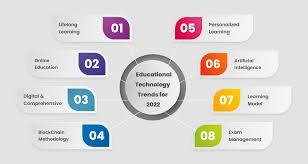

Artificial Intelligence (AI) and Machine Learning
Impact of artificial intelligence on classroom learning experiences and machine gaining knowledge of are revolutionizing schooling by way of enabling more customized and adaptive studying reports. AI-powered systems can analyze pupil performance records to tailor educational content to man or woman wishes. For example, AI can perceive a student’s strengths and weaknesses, supplying customized sporting events and resources to address particular gaps in expertise.
Key Applications
Adaptive Learning Systems
Platforms like DreamBox and Knewton adjust the problem and kind of content based on real-time evaluation of scholar interactions.
Automated Grading
AI can grade assignments and provide instantaneous comments, reducing the administrative burden on educators and letting them recognition greater on interactive coaching.
Virtual Reality (VR) and Augmented Reality (AR)
Virtual Reality (VR) and Augmented Reality (AR) are developing immersive gaining knowledge of environments that could decorate engagement and information. These technologies offer college students the opportunity to discover and engage with content in approaches that conventional strategies can not.
Key Applications
Virtual Field Trips
VR allows college students to go to historic websites, outer space, or maybe microscopic environments with out leaving the classroom. For instance, Google Expeditions gives virtual area trips to numerous global landmarks.
Interactive Simulations
: AR packages like JigSpace permit students to visualise complex ideas, such as the workings of the human frame or mechanical structures, via interactive 3-D fashions.
Gamification
Gamification incorporates recreation design elements into instructional settings to make gaining knowledge of extra enticing and motivating. By integrating factors, badges, leaderboards, and other recreation-like functions, educators can beautify scholar motivation and participation.
Educational Games
Platforms like Kahoot! And Quizizz use game mechanics to make quizzes and evaluation periods extra interactive and competitive.
Game-Based Learning Environments
Tools like Classcraft include function-gambling sport elements to encourage nice behavior and collaboration among students.
Learning Analytics
Learning analytics involves the collection and evaluation of data related to pupil getting to know methods and results. By leveraging data, educators can benefit insights into student overall performance and make knowledgeable selections to enhance teaching strategies and gaining knowledge of environments.
Performance Tracking
Learning management systems (LMS) like Canvas and Blackboard offer analytics dashboards that assist educators monitor student progress and identify trends.
Predictive Analytics
Tools such as Brightspace’s Insights use ancient statistics to expect student performance and perceive those at risk of falling at the back of.
Cloud-Based Learning Platforms
Cloud-primarily based mastering systems provide flexible and scalable answers for handing over educational content material and dealing with classroom sports. These systems facilitate collaboration, useful resource sharing, and get right of entry to to instructional materials from anywhere with a web connection.
Collaborative Tools
Google Classroom and Microsoft Teams for Education provide gear for document sharing, institution work, and communication amongst college students and teachers.
Resource Access: Platforms like Edmodo and Schoology enable college students to access route materials, submit assignments, and interact with friends and instructors on-line.
EdTech for Special Education
Technology is more and more getting used to support students with unique wishes, imparting gear and assets tailored to numerous mastering requirements. Assistive technologies and adaptive mastering equipment are assisting to create more inclusive academic environments.
Text-to-Speech and Speech-to-Text Tools
Tools like Kurzweil 3000 and Dragon NaturallySpeaking assist college students with analyzing and writing problems.
Customized Learning Environments:
Software like ModMath helps college students with dysgraphia by using providing a digital platform for fixing math troubles.
Blockchain for Education
Blockchain generation, recognised more often than not for its use in cryptocurrencies, is beginning to make an impact in education through its ability to securely and transparently manage instructional facts and credentials.
Digital Diplomas and Certificates
Platforms like Learning Machine and the MIT Media Lab are using blockchain to issue and verify virtual diplomas and certificates, lowering fraud and simplifying the credential verification method.
Decentralized Learning Records
: Blockchain can create steady, immutable statistics of scholar achievements and gaining knowledge of pathways, supplying a complete and verifiable educational history.
Personalized Learning
Personalized learning leverages technology to tailor academic stories to the specific needs and options of every student. This technique aims to enhance learning by using accommodating person getting to know styles, paces, and hobbies.
Customized Learning Paths
Platforms like Khan Academy and Coursera provide publications that adapt to the learner’s pace and provide recommendations based totally on progress and hobbies.
Learning Profiles
Tools inclusive of SMART Learning Suite allow teachers to create and track personalized getting to know profiles for every student, facilitating targeted coaching and comments.
Internet of Things (IoT) in Education
The Internet of Things (IoT) connects various devices and sensors to the net, enabling clever lecture rooms wherein bodily items can have interaction with digital structures. This technology has the ability to enhance each coaching and mastering stories.
Smart Classrooms
IoT gadgets like clever whiteboards and related sensors can music classroom situations, along with temperature and lights, and modify them to optimize gaining knowledge of environments.
Interactive Learning Tools
IoT-enabled devices, including linked robots and programmable sensors, offer hands-on learning reviews in subjects like robotics and science.
Mobile Learning
Mobile getting to know, or m-studying, utilizes cellular devices like smartphones and capsules to facilitate getting to know out of doors traditional classroom settings. This fashion helps anytime, everywhere access to educational assets.
Educational Apps
Apps such as Duolingo for language getting to know and Photomath for solving math troubles offer on-the-go gaining knowledge of possibilities.
Flexible Learning Resources
Mobile structures allow students to get right of entry to path materials, participate in discussions, and entire assignments from their devices.
#latest trends in educational technology for personalized learning#Impact of artificial intelligence on classroom learning experiences
2 notes
·
View notes
Text

Future Trends: The Increasing Popularity of VR CGI in Digital Narratives
As technology improved, one exciting trend is the rising use of VR CGI in digital narratives. This innovative approach immerses audiences in stories like never before, blending virtual reality with stunning computer-generated imagery.
In this post, we will explore how VR CGI is transforming storytelling across various media, including xml epg guide, xmltv generator, and interactive experiences.
Extended Reality (XR), encompassing Virtual Reality (VR), Augmented Reality (AR), and Mixed Reality (MR), is poised to revolutionize the digital narrative landscape by merging the physical and virtual worlds.
As XR technologies advance, they are finding applications across numerous fields, enhancing user experiences and enabling new ways of interaction.
In the realm of digital narratives, this means a transformative shift towards more immersive and interactive storytelling formats.
For instance, interactive narratives will allow audiences to influence the direction of stories through choices, creating a personalized and dynamic storytelling experience. This level of interactivity, supported by gamification elements such as challenges and rewards, will make narratives not only more engaging but also deeply memorable.
Understanding the Popularity of VR CGI in IPTV EPG
The integration of AI in storytelling is set to redefine audience engagement, with AI-generated characters and chatbots improved based on user interactions. This dynamic personalization will tailor stories to individual preferences, enhancing emotional resonance and relevance.
Furthermore, user-generated storytelling platforms are empowering audiences to become storytellers themselves, fostering a rich diversity of narratives and perspectives. This shift is supported by advanced software capabilities that cater to a younger, digitally savvy audience, driving narrative innovation.
Rise of VR CGI in IPTV: Future XMLV EPG Trends
In the context of xmltv epg m3u and Mfiles technology, the use of immersive 360 VR experiences can evoke a strong sense of presence, making viewers feel like participants rather than mere observers. Directing attention in 360 VR storytelling remains a challenge, requiring innovative techniques to guide viewers to key story elements.
However, the potential for non-linear narratives in 360 VR allows viewers the freedom to explore different perspectives and storylines, enhancing the narrative depth and engagement. This integration of VR and CGI within XMLTV blogs can significantly enhance the viewer's experience, making the guide itself a part of an interactive entertainment experience.

Bringing Digital and Physical Worlds Together
Augmented Reality (AR) and Virtual Reality (VR) technologies are pioneering the fusion of digital and physical realms, offering enhanced perceptions and interactions with the real world. AR overlays digital information onto the physical environment in real-time, using sophisticated tracking and rendering to blend virtual elements seamlessly.
This technology has not only captured the public's imagination through applications like Pokémon Go and Snapchat filters but is also expanding into sectors like retail, advertising, and tourism, enhancing user experiences by providing contextual information in an interactive format.
On the other hand, VR immerses users in a completely virtual environment, crafted to deliver a compelling sense of presence through multi-sensory feedback. This technology is employed across various fields including gaming, training simulations, and tourism, where it provides unique, immersive experiences that are profoundly engaging.
In educational settings, VR transforms learning by enabling interactive experiences that improve retention and engagement, such as virtual field trips or complex scientific simulations.
The convergence of AR and VR into Mixed Reality (MR) represents a significant leap towards blending the digital and physical worlds. MR allows for a spectrum of experiences where digital and real-world elements coexist and interact in real-time, offering new possibilities in gaming, entertainment, and beyond.
For instance, in architecture and design, MR can streamline design processes and enhance client presentations by superimposing proposed architectural changes onto existing physical spaces.
In healthcare, MR applications assist in complex surgical procedures by overlaying critical information onto the surgeon’s field of view, improving precision and patient outcomes. This integration of digital and physical realities is not only redefining user experiences but also setting new benchmarks in how we interact with and perceive our environment.
Optimization of VR Applications for XMLTV Generator
Throughout this article, we have traversed the innovative landscapes where virtual reality (VR) CGI and XMLTV converge, offering a glimpse into the future of ultra-immersive storytelling and content presentation in technology blogs.
The integration of VR CGI with XMLTV not only enriches the user experience by providing a dynamic and engaging way to explore program guides but also sets a new bar for the presentation of information.
Crafting content that leverages these technologies invites readers into a world where they are no longer passive consumers but rather active participants in an immersive journey.
The examples and use cases discussed underscore the practical applications and the transformative potential of merging VR CGI with XMLTV, from interactive program previews to enhanced storytelling that deeply resonates with the audience.
Acknowledging the boundless possibilities, it's clear that the amalgamation of VR CGI and XMLTV within technology blogs represents a pioneering step towards redefining digital narratives and user experience.
For content creators and technologists alike, understanding and harnessing this synergy is critical in crafting blogs that not only inform but also mesmerize and engage.
As we look forward, embracing these advancements could very well dictate the success and relevance of digital content within the ever-changing domain of technology and media.
As part of exploring this vast potential and ensuring content remains relevant and engaging, we invite you to uncover the boundless potential of Virtual Reality CGI and elevate your XMLTV Technology Blog by checking out our blog post and experiencing the ease of Entertainment Technology through XMLTV EPG for IPTV Guide.
Want to know more? You can visit this web page and discover the advantages it brings to every tech-savvy individuals and why content creators are captivated by these immersive narratives.
youtube
2 notes
·
View notes
Text
What’s Next in Education? Trends Shaping the Future

As an education researcher, I have conducted numerous experiments to uncover the trends shaping the future of education. These trends, driven by technology and a better understanding of learning processes, promise to transform how we teach and learn.
Personalized Learning
Personalized learning adapts to each student's needs, making education more effective. Research shows that using adaptive learning technologies can improve student engagement and performance. For example, my experiments have found that students using productive or personalized learning tools often understand material better and retain information longer.
Blended Learning
Blended learning mixes traditional classroom teaching with online learning or you can use youtube playlist by knowing their length. This approach offers flexibility and lets students learn at their own pace. Studies, including my own, show that blended learning can help students do better than those in traditional classes. It combines the best of both worlds, making learning more accessible and effective.
Project-Based Learning (PBL)
Project-based learning focuses on real-world problems, encouraging students to apply what they learn. My research shows that PBL boosts critical thinking and creativity. Students working on projects tend to be more motivated and develop better problem-solving skills.
Gamification
Gamification adds game elements to learning, making it more engaging. Experiments show that students are more motivated and participate more when learning feels like a game. Points, badges, and leaderboards can make studying fun and competitive.
Social and Emotional Learning (SEL)
Social and emotional learning helps students develop important life skills. My studies show that SEL improves academic performance and reduces behavioral problems. Students in SEL programs are better at managing their emotions and interacting with others.
Microlearning
Microlearning breaks information into small, easy-to-understand chunks. This method helps students learn complex subjects more effectively. Research, including my own, shows that microlearning improves understanding and retention of information. For instance, knowing the YouTube playlist length can help organize and manage educational content more efficiently.
Virtual and Augmented Reality (VR/AR)
VR and AR provide immersive learning experiences. These technologies can simulate real-world environments, making learning more engaging. My research shows that VR and AR help students understand complex subjects better by allowing them to interact with the material in a hands-on way.
Lifelong Learning
Lifelong learning encourages continuous education. As the job market changes, it's important to keep learning new skills. My studies suggest that promoting lifelong learning helps individuals stay competitive and adapt to new challenges.
Learning Analytics
Learning analytics uses data to improve education. By analyzing student performance, educators can make better decisions to support learning. My experiments show that data-driven insights can personalize learning and enhance teaching methods.
Collaborative Learning
Collaborative learning helps students work together to achieve common goals. This method improves communication and teamwork skills. Research, including my own, shows that students who learn collaboratively tend to do better academically and are better prepared for the workplace.
By understanding and embracing these trends, educators can create more effective and engaging learning environments.
2 notes
·
View notes
Text
5 trend of ICT
The information and communications technology (ICT)
Artificial Intelligence (AI) and Machine Learning (ML)
AI and ML are at the forefront of ICT innovation, enabling machines to learn from data and perform tasks that traditionally required human intelligence. This includes tasks like image recognition, natural language processing, and predictive analytics. AI and ML are being used in a wide range of applications, from self-driving cars to personalized medicine to fraud detection.
Edge Computing
Edge computing is a distributed computing paradigm that brings computing and data storage closer to the source of data, such as smartphones, sensors, and IoT devices. This reduces latency and improves performance, making it ideal for real-time applications and data-intensive tasks. Edge computing is becoming increasingly important as the volume of data generated by IoT devices continues to grow.
cybersecurity
With the increasing reliance on technology, cybersecurity has become a critical concern. Cyberattacks are becoming more sophisticated and widespread, targeting individuals, businesses, and governments. The ICT industry is responding with advanced security solutions, including threat intelligence, intrusion detection systems, and data encryption.
Blockchain
Blockchain is a distributed ledger technology that enables secure and transparent transactions. It is being used to develop applications in various sectors, including finance, supply chain management, and healthcare. Blockchain technology has the potential to revolutionize how we interact with each other and with businesses.
Virtual Reality (VR) and Augmented Reality (AR)
VR and AR technologies are creating immersive experiences that blur the lines between the physical and digital worlds. VR immerses users in a simulated environment, while AR overlays digital information onto the real world. These technologies are being used in gaming, entertainment, education, and training.
In conclusion, these five trends are shaping the future of ICT, driving innovation and transforming how we live, work, and interact with the world. As these technologies continue to evolve, we can expect to see even more exciting developments
2 notes
·
View notes
Text
The Rise of Augmented Reality in Everyday Life
Augmented Reality (AR) is a transformative technology that superimposes digital information onto the real world, enhancing our perception of reality. Unlike Virtual Reality (VR), which creates an entirely immersive virtual environment, AR overlays digital elements—such as images, sounds, or text—onto our physical surroundings using devices like smartphones, tablets, or AR glasses.
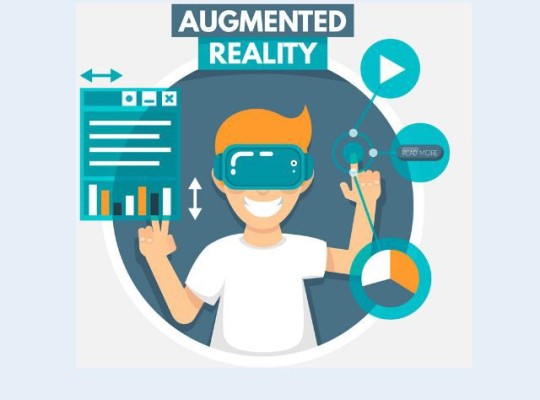
Present-day Uses of AR
Augmented reality (AR) is altering how we interact with technology and the world around us by making substantial breakthroughs across multiple fields.
Retail: AR is being used by retailers to improve the in-store experience. Customers may see how makeup, accessories, and clothing will appear on them without having to visit a store by using virtual try-on apps. One example is the AR app from IKEA, which allows users to see how furniture would fit and appear in their houses.
Healthcare: AR is being used in healthcare to help with medical training and complicated procedures. During procedures, surgeons can access real-time data and 3D organ renderings with AR glasses, which will increase accuracy and improve results.
Education: By increasing interaction and engagement, augmented reality is revolutionizing the way people learn. By allowing students to investigate 3D replicas of historical sites, the solar system, or anatomical structures, they may make abstract ideas come to life.
Entertainment: AR has been warmly welcomed by the entertainment sector. Augmented reality (AR) is giving consumers new experiences in everything from immersive movie advertising to apps like Pokémon Go that mix virtual characters with actual locales.
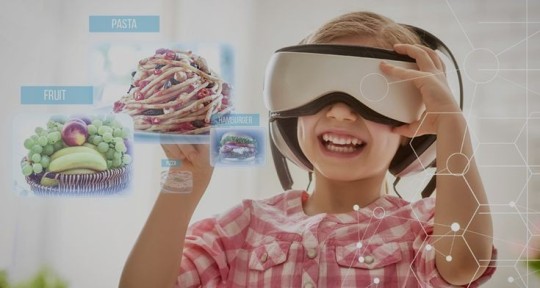
Improving Social Media and Mobile App User Experiences
AR features are being added to mobile apps and social media platforms more often to draw consumers in. AR filters are a feature of Instagram and Snapchat that enhance images and videos with fun, animated effects, encouraging user creativity and interaction. With the use of augmented reality (AR) apps like Google Lens, users can quickly get information about items, landmarks, and other subjects by pointing the camera of their phone at objects.
Effects on Marketing and Advertising Plans
Through the creation of immersive, interactive campaigns that grab consumers' attention, augmented reality is transforming marketing and advertising. Through gamified marketing, interactive advertisements, and virtual product demos, brands are utilizing augmented reality to increase engagement and conversion. For instance, Pepsi's augmented reality bus stop campaign left a lasting impression by delighting onlookers with lifelike digital animations.
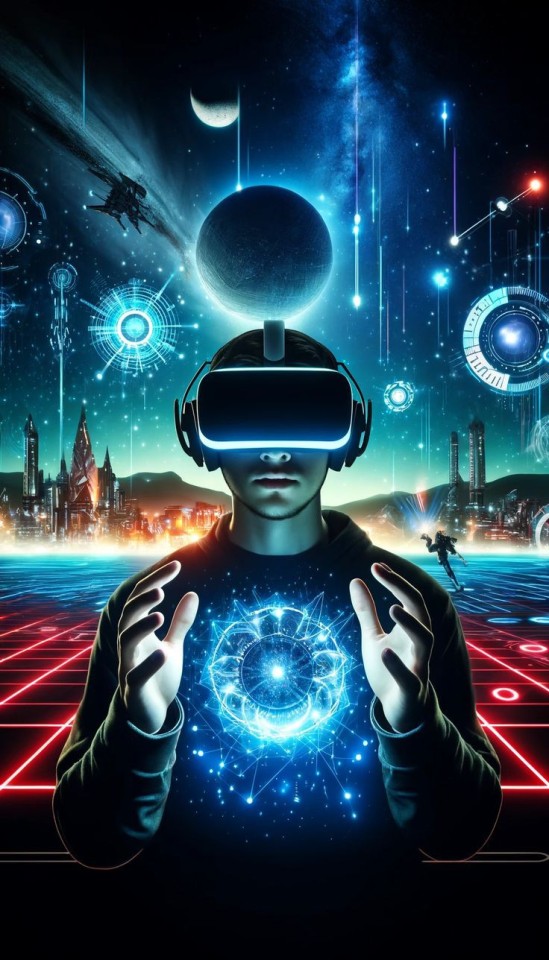
Prospects & Development Trends for AR in the Future
The development of augmented reality (AR) is expected to continue due to ongoing technological developments. AR experiences will be improved, becoming more smooth and accessible with advancements in AR glasses, computing power, and AI integration. We may anticipate that augmented reality (AR) will revolutionize a number of businesses and how we communicate with one another.
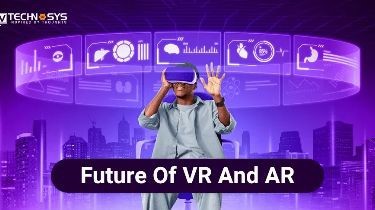
Conclution
The emergence of augmented reality is evidence of the infinite applications of technology. AR is changing our daily experiences in a variety of ways, from improving healthcare and retail to transforming education and entertainment. As augmented reality develops, it promises to usher in a day where the virtual and real worlds coexist peacefully, presenting countless chances for creativity and interaction.
2 notes
·
View notes
Text

What is marketing:-
Introduction
In the fast-paced world of digital marketing, staying ahead of the curve is crucial for businesses aiming to succeed in 2024 and beyond. With technological advancements and shifting consumer behaviors, the landscape of marketing continues to evolve rapidly. This blog explores key strategies and trends that businesses can leverage to thrive in today's digital age.
1. Understanding the Current Marketing Landscape
- Digital Transformation: How businesses are adapting to digital-first strategies.
- Consumer Behavior Shifts: The rise of mobile-first browsing and shopping.
- Data-Driven Insights: Harnessing big data for targeted marketing campaigns.
2. Key Digital Marketing Strategies
- Search Engine Optimization (SEO): Best practices for ranking high on search engines.
- Content Marketing: Creating valuable content to engage and convert customers.
- Social Media Marketing: Leveraging platforms like Facebook, Instagram, and TikTok for brand awareness and customer engagement.
- Email Marketing: Building effective email campaigns for lead nurturing and customer retention.
- Paid Advertising: Maximizing ROI through Google Ads, Facebook Ads, and other paid channels.
3. Emerging Trends in 2024
- AI and Machine Learning: How AI is transforming marketing automation and personalized customer experiences.
- Voice Search Optimization: Optimizing content for voice search queries.
- Augmented Reality (AR) and Virtual Reality (VR): Enhancing customer engagement through immersive experiences.
- Blockchain Technology: Ensuring transparency and security in digital marketing efforts.
4. Case Studies and Success Stories
- Case Study 1: How Company X achieved a 200% increase in sales through an innovative digital marketing campaign.
- Case Study 2: Lessons learned from Company Y's successful social media influencer collaboration.
- Case Study 3: Implementing AI-driven strategies at Company Z: A roadmap to success.
5. The Future of Marketing: Predictions and Recommendations
- Personalization: Tailoring marketing efforts to individual consumer preferences.
- Ethical Marketing: Building trust and credibility through ethical practices.
- Continuous Learning: The importance of staying updated with industry trends and evolving technologies.
Conclusion
As we move further into 2024, digital marketing will continue to evolve, presenting both challenges and opportunities for businesses. By embracing innovative strategies, leveraging new technologies, and staying agile, businesses can position themselves for success in the ever-changing digital landscape.
Call to Action
Ready to take your marketing efforts to the next level in 2024? Contact us today to learn how our tailored strategies can help your business thrive in the digital age.
This outline provides a comprehensive framework for a 1500-word blog post on digital marketing. You can expand each section with detailed explanations, examples, and insights to provide value to your readers and establish your authority in the field.
2 notes
·
View notes
Text
The Future of Digital Marketing
The future of digital marketing is poised for significant transformation, driven by technological advancements and evolving consumer behaviors. Here are key trends and innovations shaping the future of digital marketing:
Artificial Intelligence (AI) and Machine Learning: AI and machine learning will continue to revolutionize digital marketing by enabling hyper-personalized customer experiences, predictive analytics, and advanced customer service solutions like chatbots. These technologies will help businesses understand and anticipate customer needs more accurately.
Voice Search Optimization: With the rise of voice-activated devices such as Amazon Echo and Google Home, optimizing content for voice search is becoming crucial. This trend requires businesses to focus on natural language processing and long-tail keywords to ensure their content is easily discoverable through voice queries.
Augmented Reality (AR) and Virtual Reality (VR): AR and VR are set to create immersive customer experiences, offering new ways for brands to engage with their audience. Virtual try-ons, interactive product demos, and immersive storytelling will become more prevalent, enhancing customer interaction and satisfaction.
Video Content Dominance: Video content will continue to dominate digital marketing strategies. Platforms like YouTube, TikTok, and Instagram Reels are already popular, and the trend towards live streaming and interactive videos will grow, providing engaging and shareable content.
Social Commerce: Social media platforms are increasingly integrating e-commerce features, allowing users to shop directly from their feeds. This trend simplifies the customer journey and drives sales, making social commerce a significant area of growth.
Privacy and Data Security: As consumers become more aware of data privacy issues, businesses must prioritize transparency and data security. Complying with regulations and building trust through ethical data practices will be essential.
Embracing these trends and technologies will enable businesses to stay competitive and effectively engage with their audiences in the dynamic digital landscape.
#digital marketing#Artificial Intelligence (AI)#Machine Learning#Augmented Reality (AR)#Social Commerce
2 notes
·
View notes